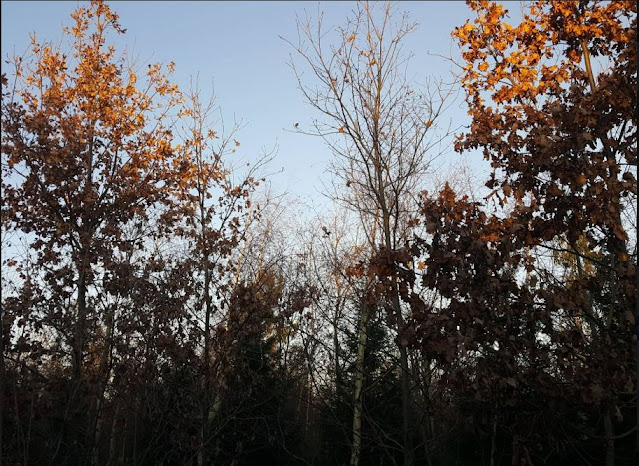Halo Pollarding and Thinning.
Almost all quality timber production involves planting many more trees than are intended for the final crop. This gives very much more choice and as most timber is grown for several decades there is plenty of opportunity for reducing the number of trees particularly for removing inferior stems. This process is known as thinning. Commercial management usually involves removing whole rows, known as Line Thinning. This was an uneconomic stage in the last quarter of the 20th century, as it was costly and the thinnings had little value, resulting in under managed stands. The rise of the wood fuel market has partly changed this but rising planting and labour costs have prevented its systematic reintroduction.
Oak trees grown in a park try to be as wide as they are tall. This does not make for valuable long lengths of timber. To persuade the trees to grow taller and straight Oaks are often planted with other trees which shade the sides of the Oaks and encourage them to grow straight up. These other trees often conifers are known as nurse trees. The conifers are then steadily removed, or thinned, as they get above oaks by which time the Oaks have a predominately straight stem and no or few low branches as the trunks have received very little light. Less well grown Oaks from a row can also be cut down. Only about 30 Oak trees per acre are required for maximum quality yield after 120-150+ years.
A thinning method developed on the continent relies on halo thinning. Here the best oak trees are selected after only say 20 years and the trees which are touching their crowns are removed. Side branches may also be removed. The crowns get the maximum amount of light, but there are sufficient trees to stop side light from encouraging epicormic growth, (side branches) from the lower trunk. The method is described in "Oak: fine timber in 100 years" by Jean Lemaire, translated by Bede Howell. It is known as halo thinning.
I had initially decided not to plant Oak. I did want to see some final product and it seemed every small wood planted was being done with oak and an ancient woodland was the ideal. As I learnt more about woods I realised this would not produce timber trees.
I had heard Bede Howell talking about halo thinning, and thought that the surrounding trees did not need removing completely. Only the parts that were competing with the Oak's crown.
I had planted local oak seedlings at either end of Cairn wood in areas that it would be impractical to subsoil. These had grown quite well, I thought. Having given up, temporarily as it turned out, on Eucalypts I planted Oaks with fast growing mainly broadleaf trees. The idea being that the trees could have their tops cut off when they grew above the Oaks. Planting was carried out in the very cold winter of 2010/11. I had assumed that there would be a telescopic chain saw with a swivel head that would enable a horizontal cut. This is not the case and in 2021/22 I started selectively removing the tops of Alder and Silver Birch with an angled, often messy, cut with a telescopic battery pole saw. If rot gets in at the top that is not a huge worry as the nurse trees are effectively sacrificial. The tops can make chip or fuel logs, the stems would make low quality logs. They would however keep the Oak trunks clean, epicormic free.
I had thought that this idea was original, then I visited Norbury Park. Here Professor Jo Bradwell was doing the same, on a somewhat larger scale. He was also applying the idea to other Species. This gives me some confidence that I am not being silly. Norbury Park have a motorised telescopic pair of shears for removing the tops of the trees. (Gadget Envy). I am also doing something similar with potential timber trees at Pit Wood with cherry, Robinia and Sweet Chestnut in a less systematic way.
Professor Bradwell has referred to this as Halo Pollarding. He has used the term in print. (Norbury Park, An Estate Tackling Climate change 2022, RFS Journal July 2022 ) I have followed his lead though I think Halo Topping is a more accurate term.
This is a labour intensive way of managing. It is unlikely to be taken up commercially. The way this halo pollarding preserves standing timber promoting carbon sequestration and biodiversity means it might be an option for conservation driven woodlands to produce quality timber. Though grey squirrels and new pests and diseases make oak timber a less attractive commercial proposition, and provide wildlife woodlands with a dilemma.








No comments:
Post a Comment